from Vigilant Citizen:
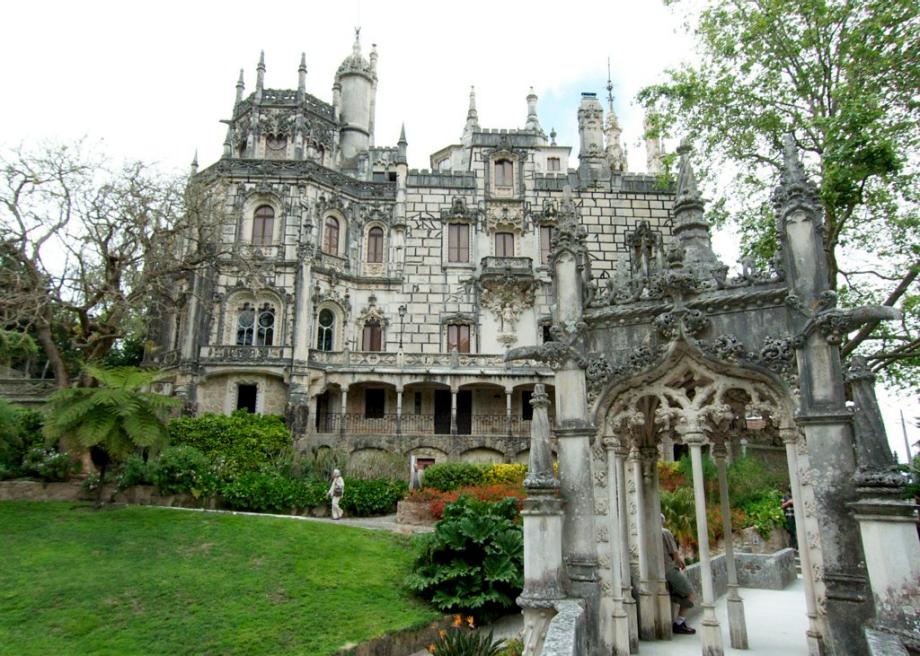
The region of Sintra, Portugal has always been surrounded by a mystical aura. In Roman times, people of the region built a temple dedicated to Cinthia, the goddess of the moon. Ultimately, the entire region was baptized with a derivation of that name: Sintra.
“Since the beginning of recorded time, Sintra has been regarded as a land cloaked in mysticism. It permeates its steep hillsides and even its air. It’s common to be surrounded in nevoeiro (fog) one moment and the next, bathed in sunlight. You can feel a bigger, stranger power at work in those hills. Its legends have been passed orally through generations and have survived since the time of the Moors — and maybe even before then.”
– Atlas Lisboa, Sintra’s Myths, Legends, and Paranormal Activity
TRUTH LIVES on at https://sgtreport.tv/

Pena Palace in Sintra.
Sintra is also the site of several bizarre stories, anecdotes, and legends.
In 1930, Aleister Crowley – the most famous occultist in modern history – faked his death in Sintra. Indeed, he let people to believe that he took his own life at Boca do Inferno (Mouth of Hell), a unique seaside cave on which waves crash in a particularly violent manner. Crowley’s fake suicide note stated:
“Can’t live without you. The other mouth of hell that will catch me won’t be as hot as yours.”
Another story involves rocks materializing from thin air.
On an October night in 1984, a call for help was made by the residents of Quinta da Penha Verde over the police radio. Apparently, the inhabitants of the farm were being assaulted by flying rocks. The GNR police and firefighters rushed to the scene, with light projectors. They found that rocks were appearing out of thin air and striking the 10 inhabitants and anything that stood in their path. The police shot rounds into the surrounding woods but to no avail.
One of the firefighters boldly stated to everyone in earshot that he did not believe in witchcraft and was convinced this was only an illusion. A stone the size of a fist promptly shot at him and, had he not stepped back, it would have slammed into his face. Upon closer inspection of the stones themselves, he noticed that they were actually warm to the touch.
The phenomenon seemed to center around the female groundskeeper of the house, Elvira da Conceição Teodoro, who was targeted relentlessly by the stones no matter where she hid. The police and firefighters noticed that when the rocks hit people they would not hurt them badly, but when they hit objects like doors and cars they left a deep dent. The stoning only stopped when the groundskeeper and her family left the farm, finding solace in Queluz.
The reporter that followed this story dug deeper and tracked down Ermilia for an interview. Though suffering from epilepsy, she swore on her life that the story was true, and what’s more, that she had been followed by these strange events all her life.
No one has ever been able to explain what happened that night.
– Ibid.
With all of that being said, one majestic yet baffling palace epitomizes the area’s occult aura: Quinta da Regaleira.
Quinta da Regaleira, the Occult Palace

The front of Quinta da Regaleira.
With its lush vegetation and beautiful architecture, Quinta da Regaleira causes its visitors to experience a piece of heaven. However, as they go down its dizzying “inverted towers” and walk through its dark tunnels, these same visitors end up experiencing a piece of hell.
Appropriately enough, a portion of the movie The Ninth Gate (starring Johnny Depp) was filmed on the premises. Produced by Roman Polanski (Rosemary’s Baby), the movie is about a 17th-century book that contains a magical secret to summon the Devil.
The heaven-and-hell duality of Quinta da Regaleira is not an accident, it is by design. Every single detail on this estate is a physical representation of occult principles – from the number of stairs that lead below the ground to the colors used in “religious” paintings. While the decorations might look “pretty” to the casual visitor, they take on an incredibly deep meaning to those knowledgeable in alchemy, Rosicrucianism, Freemasonry, and the Knights Templar.
The man behind this occult temple is an eccentric millionaire named António Augusto Carvalho Monteiro who bought the estate at a public auction in 1892.
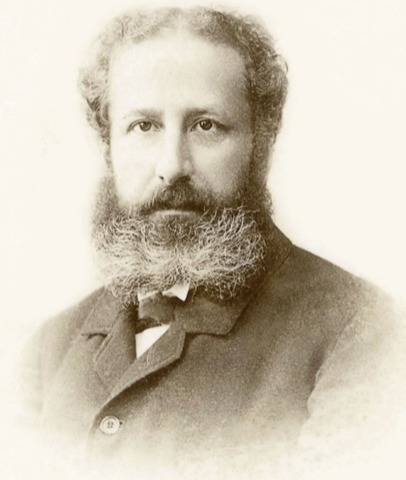
António Augusto Carvalho Monteiro turned Quinta da Regaleira into an occult palace.
Monteiro was a Brazilian-Portuguese businessman, collector, bibliophile, and entomologist. He was also a prominent Freemason and he gave himself the mission to create one of the most Masonic estates in history.
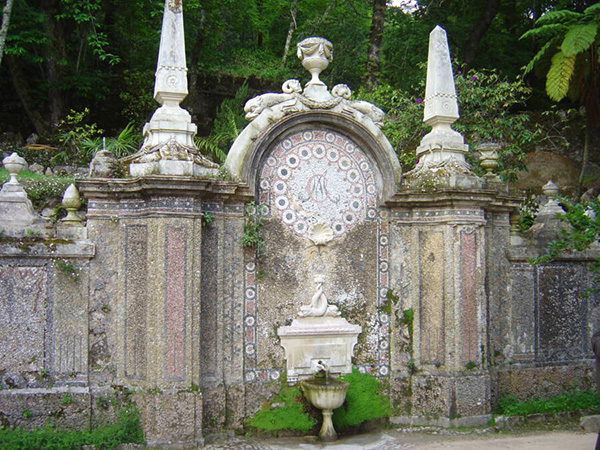
Amid the lush and otherworldly surroundings, the Fount of Abundance features a marble facade and is adorned with seashells and serpent-like creatures. It is topped by two obelisks which represent Joachim and Boaz – the two pillars of Freemasonry.

Visitors can find a collection of sculptures depicting gods such as Hermes – the mythological founder of Hermetism, the basis of Western occultism.
While the exterior of the palace has a heavenly quality to it, some figures subtly remind us that there are other forces at play as well.
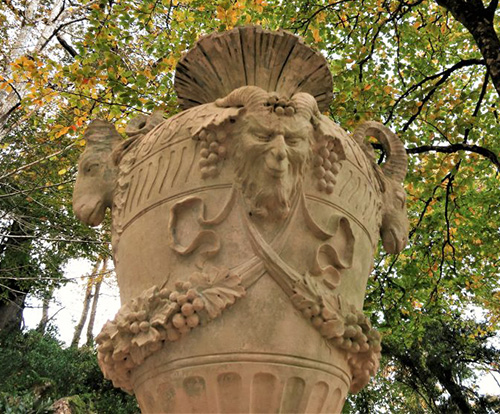
The god Pan looks over with a rather malicious look on his face.
Pan was a prominent deity in Greece. Often depicted with horns and the lower body of a goat, Pan is a phallic deity whose animalistic features represent the carnal and procreative impulses of men.
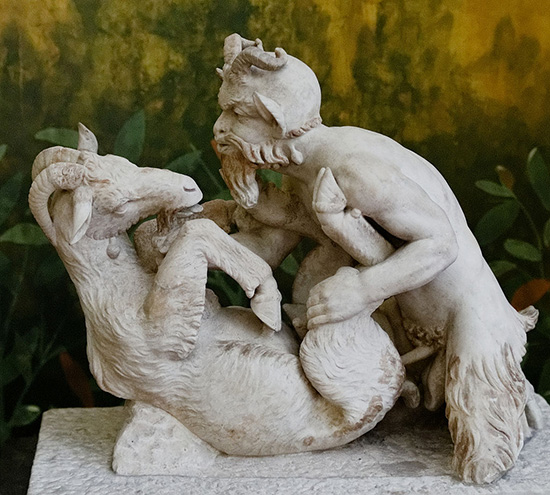
A sculpture of Pan having sex with a goat from Villa of the Papyri in Herculaneum.

Visitors with a keen eye will discover that several goat heads overlook the premises.
Considering that this temple is full of symbolism relating to the Knight Templars, these goat heads are not merely there for decorative purposes. They are mostly likely a representation of the Goat of Mendes and Baphomet – the god of the Knights Templar.
Read More @ VigilantCitizen.com





